
The colorful currency of Mexico honors history
revolution, religion, arts and sciences
Mexican Bills come in six denominations: 20, 50, 100, 200, 500 and the newly unveiled 1000 peso note. The 20 peso note (re-issued in 2001 in a plastic form) shows dapper Benito Juarez. Born in March 1806 in a village in the state of Oaxaca from a poor, illiterate peasant family. Juarez didn’t know how...

Olmecs of Mexico
The Olmecs, which means “people of rubber” in Nahuatl (the language of the Aztecs) began their civilization in southeastern Mexico between 1600 B.C. and 1400 B.C. It wasn’t until this century that the Olmecs were acknowledged to be part of Mexico’s history. Researchers prior to this time attributed many of the discoveries now associated with...
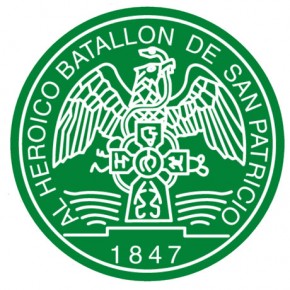
Mexico’s Fighting IRISH
“From the great gales of Ireland / Are the men that God made mad / For all their wars are merry / And all their songs are sad.” – G.K. Chesterton For the United States Army they were more hated than the vilest enemy soldier — traitors, deserters, defectors. They are best forgotten. For Mexicans...

El Tajin
Tajín was one of the most important cities of ancient Mexico, and as more studies are made the more important it appears to have been. Located on the Gulf coast of Mexico in the state of Veracruz, Tajin was a pre-Hispanic city that reached its peak in the Epi-Classic period (in between the Classic...
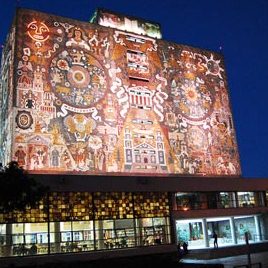
Mosaic Murals of the UNAM Central Library
Nowhere is Mexico´s love of their pre-Hispanic heritage more apparent than in the stunning central library of the UNAM (Universidad Nacional Autonoma de Mexico), in the southern part of Mexico City. Ten stories tall, the building is covered in its entirety by mosaic stone murals depicting the history of Mexico. The building was built by...
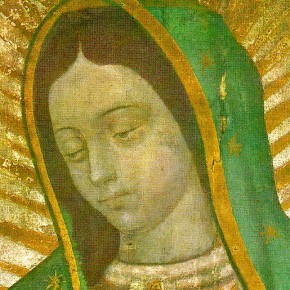
Our Lady of Guadalupe
December 12th is traditionally known in Mexico as the Day of the Virgin of Guadalupe (Día de la Virgin de Guadalupe), celebrating the manifestation of the Virgin Mary on Dec 9, 1531. It is the most important holiday in Mexico, even more important that Christmas, and is celebrated nationwide. Millions of pilgrims converge on the Mexico City...

la flor de Nochebuena, Cross-cultural beauty
Widely admired and cultivated in many lands, Euphorbia pulcherria is best known north of the Rio Grande as……..? Quick! What’s Mexican in origin, American by name, sometimes misunderstood and red all over? Hint: this item is leafy and often called a flower, which it’s not, and was once thought to be poisonous, which it isn’t....
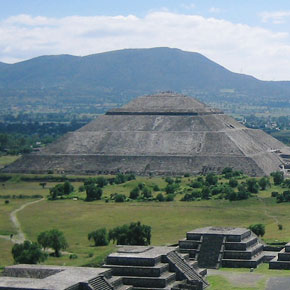
Teotihuacan
Teotihuacan is an enormous archaeological site in the Basin of Mexico, containing some of the largest pyramid structures built in the pre-Colombian Americas. Apart from the pyramids, the archaeological site of Teotihuacan is also known for its large residential complexes, the so-called calle de los muertos (street of the dead), and its colorful well-preserved murals....
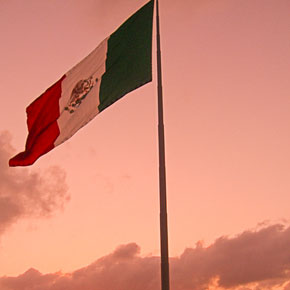
La Bandera
The Flag of Mexico
The Mexican flag has changed many times over the course of the country’s history… When Miguel Hidalgo y Costilla declared independence in 1810, he carried the standard flag of the Virgin of Guadalupe. This is considered to be the first Mexican flag. In 1813, the revolutionaries designed a new flag. They used white silk with...
Himno Nacional Mexicano
The Mexican National Anthem
The creation of the Mexican National Anthem: November 12, 1853 During the presidency of General Mariano Arista, a literary contest was held to select the lyrics of the National Anthem. February 3, 1854 The Official Journal of the Federation published the name of the winner titled, Let us fly to combat, to revenge and that...
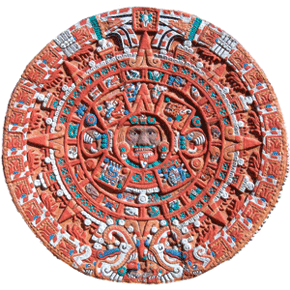
The Aztec Sunstone Calendar
How the Aztecs counted their days teaches how they lived
The Aztecs were the last of the great cultures of Mesoamerica before the European conquests. They continued the traditions of the first of the Mesoamericans who looked into the heavens for ways to live in the good graces of their gods and the universe around them. The Aztecs were an agricultural people that equated religion...

¡Viva Mexico! ¡Viva La Revolucion!
Celebrating the 100th Anniversary of the Mexican Revolution
Mexico’s history is laden with severe social and economic challenges. In the beginning of the twentieth century under the rule of Porifirio Diaz (1867-1911), political corruption and the ever widening gap between rich and poor caused the country to erupt in a bloody revolution that lasted from 1910 until 1920. Once the Constitution of 1917...



